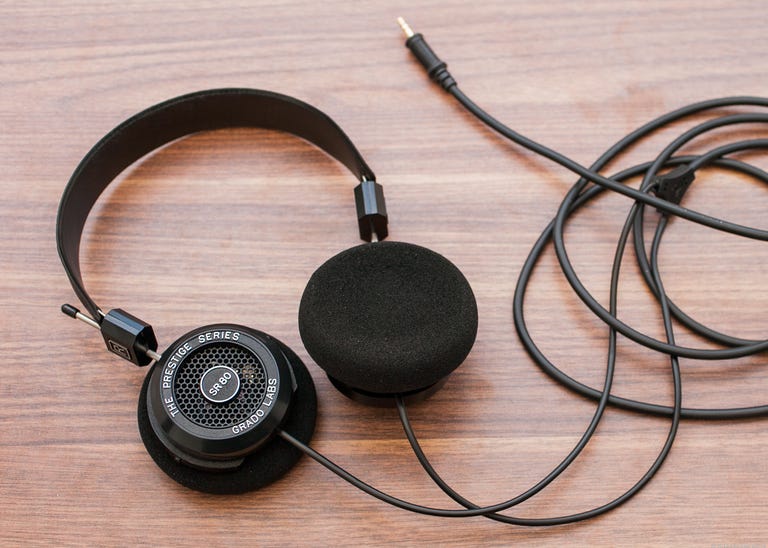 Why You Can Trust CNET
Why You Can Trust CNET Grado Labs Prestige SR80i review: Grado Labs Prestige SR80i
The Grado SR80i model is a great pair of budget headphones that offer sparkling sound with tight bass and are best suited to home use.
Grado has upgraded its SR80 headphones to the new "i" moniker and while they may look the same as the SR60i, and many models previous, there is a lot going on behind the scenes that's worth the extra $20 investment.
The Good
The Bad
The Bottom Line
Design and features
If you've seen one pair of Grado headphones, you've pretty much seen them all, but the new i suffix does bring changes with it, including a minor hinge reroute and an upgraded driver powering the diaphragm. The SR80i features a fake leather headband, plastic "radio operator" earcups, and metal struts holding it all together that still echo the vintage design flare of the original model. Like all Grados, the SR80is are open-back headphones, with the biggest difference being that the foam earpads now cover the drivers, rather than encircle them. Grado says the main improvement to the i version of the 80s is to sound quality, with an enhanced bass response.
As an owner of two pairs of Grado SR60is, my only reservation with the design is its build quality. While they do feel rugged, the earcups have a tendency to fall off -- they appear to be glued or plastic-welded to the metallic stems -- but Grado does offer a 12-month warranty. After that, the company will repair headphones for a "reasonable price," which in the case of my SR60i set is a flat $25, but then again my issue was easily fixed with a blob of glue.
Performance
The SR60is and the SR80is sound worlds apart despite their mere $20 difference. While the two share a dedication to exposing musical detail, the SR60i has a warm sound while the SR80i is altogether more exciting and exposes more of the upper register with zingier cymbals and breathier vocals. But this extra exposition doesn't devolve into harshness; it's like the veil has been lifted on the SR60i's already superb sound.
As the headphones are proudly made in Brooklyn, I looked to a band from the same borough, Hospitality, and its whimsical self-titled album to test the headphones. The SR80i was able to pick out individual instruments like acoustic guitars, bass, drums, and more exotic wind instruments and place them in a wide performance space. Vocal detail was excellent and cymbals were crisp, while the prodigious bass also balanced nicely. In comparison, the SR60i were less airy with a warmer and also less tiring sound.
In line with what Grado says, the SR80is drive more bass than the original model, but the trade-off seems to be less sweetness in the treble response. The fit is also less comfortable with the new pads, though you can try buying the original pads as a spare part. I experimented with swapping the old earpads and the new between headphones, while the new pads on the original SR80 sounded worst, both sets sound great on the new SR80i. If you want to keep the newfound warmth of the SR80i leave them as is, but for $20 the "L-Cush" are worth experimenting with for added zing and comfort.
Despite the low-end improvements, the SR80i model is still less bassy than the SR60, with the scale tipped the other way in favor of treble detail and immediacy. If you're looking for something a little more even with both treble detail and depth-charged bass, skip over Grado entirely and opt for the closed Audio Technica ATH-M50 headphones, which are very impressive for the extra money. What they miss, however, is the Grado's light touch with music.
I am a big fan of the Ultimate Ears 700 in-ear headphones, and the SR80s actually sound more like them than they do their own kin. Think of the SR80is as the "sitting at home" version of the UE's travel-friendly design.
Conclusion
If you're looking to spend less than $100 on a pair of headphones, my money would go to the slightly more detailed and involving SR80is than the cheaper SR60is. The small trade-off in bass response is worth it for the extra layer of detail.
On the other hand, if you own the original SR80 headphones, there is no compelling reason to get the SR80i update apart from the slightly warmer sound.


